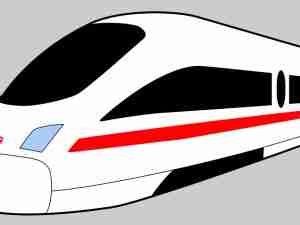Union Pacific Corp. posted profit that topped analysts’ expectations as cost cuts and price increases bolstered the bottom line even as cargo growth lagged amid supply-chain snags. The railroad cut its 2021 volume target.
Union Pacific now is predicting full-year volume growth of 5%, down from a target of 7% it had set in July. Productivity gains for the year are expected to be $350 million, lower than a July target of $500 million, the company said in a slide presentation. The goal for an increase in operating margin was reduced to 175 basis points from 200.
The Omaha, Nebraska-based railroad hauled fewer automobiles as a global chip shortage throttled vehicle production. It also shipped fewer maritime containers because of congestion that resulted in cargo stacking up at rail yards, warehouses and ports. Still, carloads of coal and industrial goods such as steel and wood were up as the economy rebounds. Overall, total carloads were unchanged from a year ago.
Earnings came to $2.57 per share during the third quarter, higher than $2.01 a year earlier, Union Pacific said Thursday in a statement. Analysts had expected $2.51. Revenue rose 13% to $5.6 billion. Analysts had estimated $5.4 billion, according to figures compiled by Bloomberg.
Even with the drag on freight volume, Union Pacific raised prices and cut costs to strengthen profit. Operating profit margin was 43.7% in the quarter, up from 41.3% a year earlier.
Truckers and railroads have been hampered by shipping snarls as intense demand for imported goods has run into a shortage of drivers and warehouse workers. That labor shortage has kept cargo-hauling capacity constrained and bottlenecks have formed, especially at ports and distribution centers where freight is unloaded. Railroads, which were also impacted when Hurricane Ida severed rail exchanges near New Orleans in August, have struggled with slowing average train speeds and longer times for railcars sitting in yards.
Union Pacific’s service suffered during the quarter because of the supply-chain issues and weather. On-time delivery dropped to 60% for general cargo and autos from 72% a year earlier. Freight car speed fell to an average of 195 miles (314 kilometers) traveled per day from 223 miles.
Union Pacific fell 0.3% to $227.34 at 9:37 a.m. in New York. Shares had risen 9.5% this year through Wednesday, trailing a 21% gain in the Standard & Poor’s 500 Index.
In a Sept. 9 interview with Bloomberg, Fritz said that, along with the driver shortage, the biggest pinch point is the lack of warehouse workers to unload containers to make room for even more freight that’s streaming to retailers’ distribution centers. That has created logjams that are now impacting both railroads and trucking companies.
To ease the congestion, Union Pacific has opened shuttered rail yards to park containers and, in July, the railroad briefly halted shipments from the Los Angeles area ports to Chicago to allow retailers to clear out backed-up containers. The company also expanded hours on weekends for receiving trucks at its rail yard near Los Angeles area ports.






